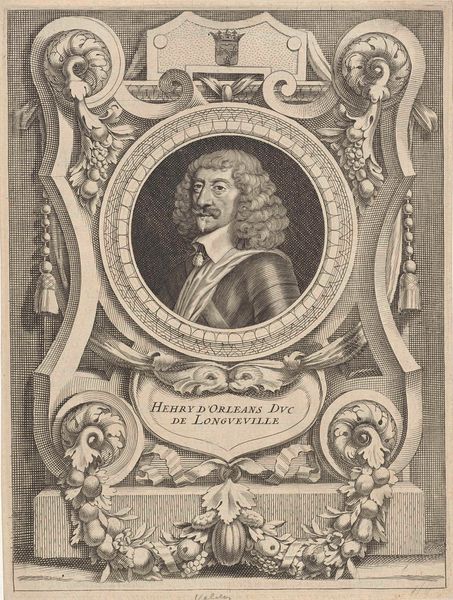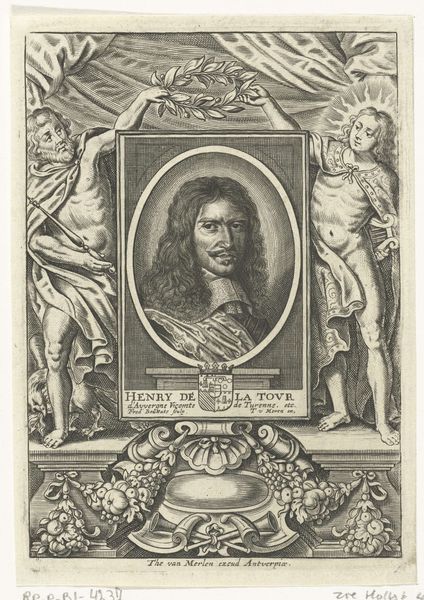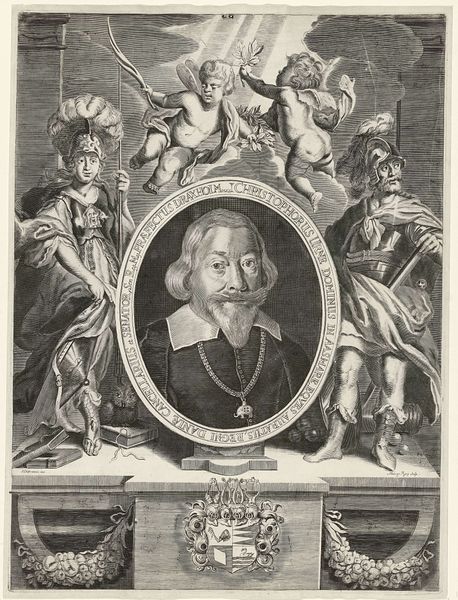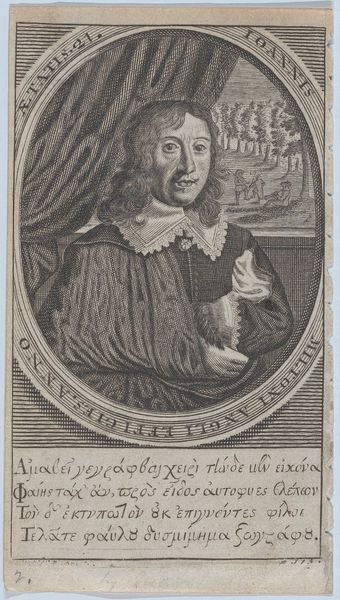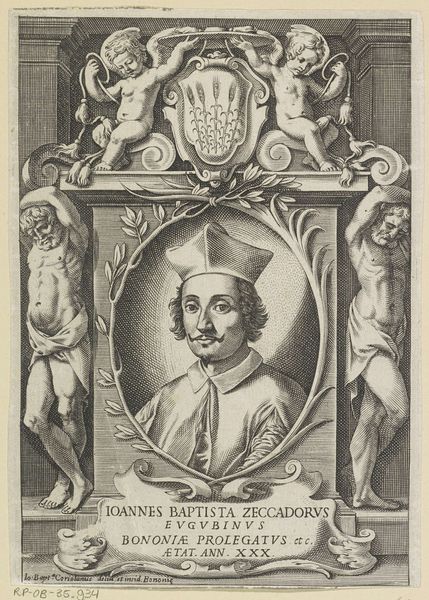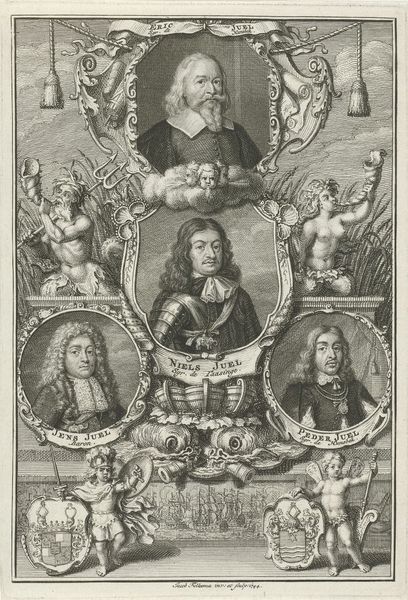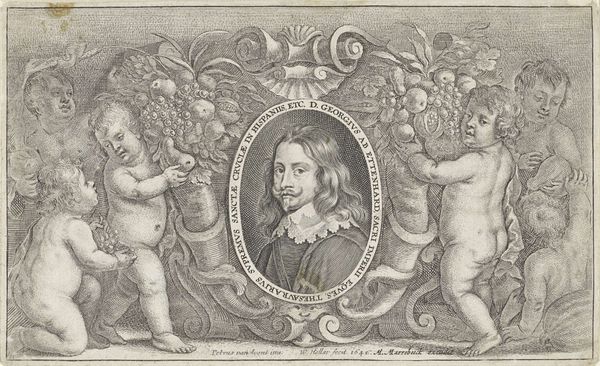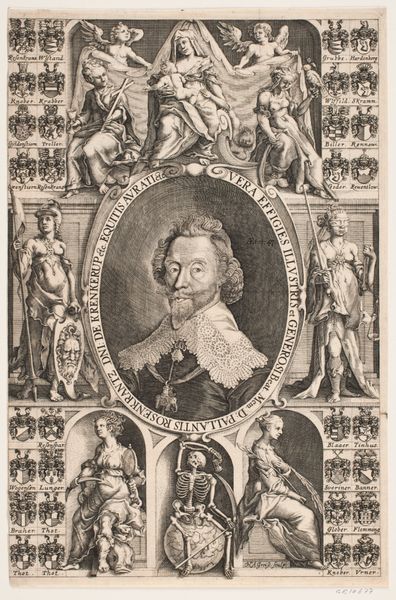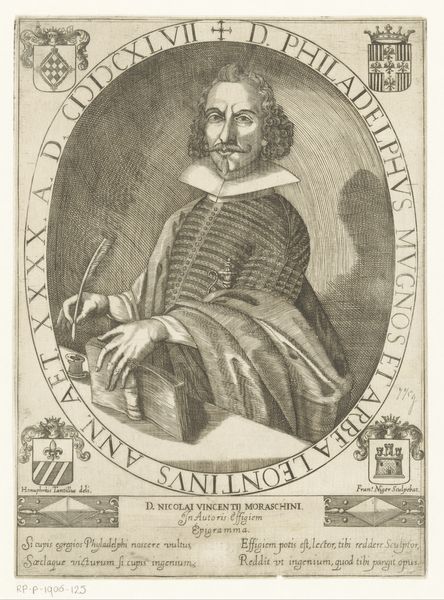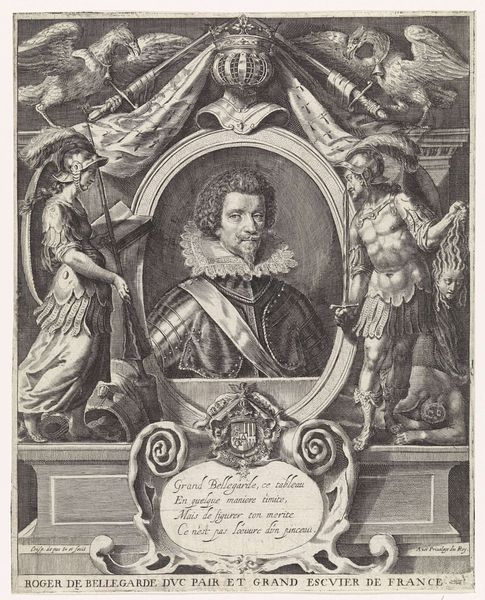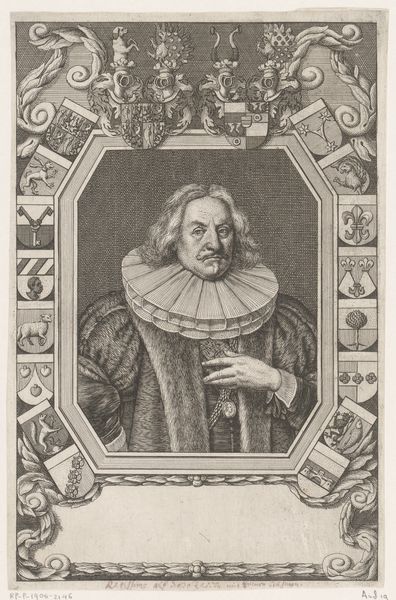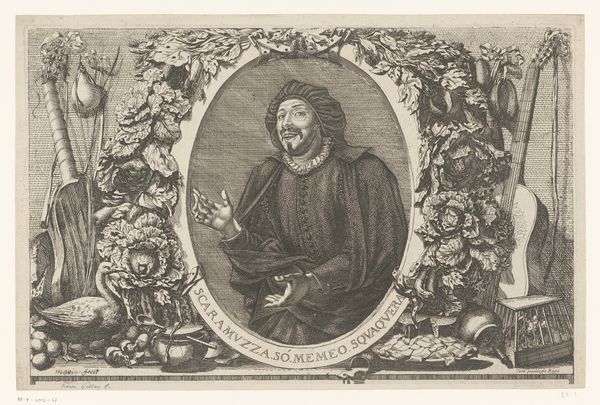
print, engraving
#
portrait
#
baroque
#
dutch-golden-age
# print
#
old engraving style
#
portrait drawing
#
engraving
Dimensions: height 158 mm, width 123 mm
Copyright: Rijks Museum: Open Domain
Editor: This is "Portret van Johannes Olfersz. Schooten," a print made between 1639 and 1670 by Crispijn van de Passe the Younger, held here at the Rijksmuseum. The intricate details and monochromatic tones create a rather serious and scholarly mood. I'm struck by how the portrait is framed within this ornate oval border with so many symbolic elements. What do you see in this piece? Curator: The complexity of the engraving immediately attracts the eye. Notice the formal, almost architectural, construction. The central oval containing the portrait is not simply decorative; it's a carefully considered compositional element. Observe the juxtaposition of the roundel containing Schooten's likeness and the rectangular elements above and below. Editor: I see it now! The celestial globes and putti above, and that miniature scene of scribes below... Curator: Precisely. Consider how the artist uses line and form to create visual weight. The density of lines and shading contributes to the seriousness you noted, but also guides the eye. Where does your gaze linger, and why? Editor: I keep coming back to Schooten's face. There's a compelling quality, like he’s a strong presence within the artwork. The engraver has certainly devoted special care to that section, too. What can we say about that level of precision? Curator: The precision indicates a clear understanding of human anatomy and character. Consider how line variation models form and conveys texture in Schooten’s beard and clothing. These graphic interventions articulate personality. It’s not just a reproduction of a face, but a construction of character through artistic method. Do you consider that detail strengthens its essence as a portrait, and not just a figure? Editor: I do. Seeing how the composition and technique combine, revealing so much detail about his profession, and perhaps even his personality. The visual analysis of the work adds a new appreciation to the context of the image. Thank you. Curator: Indeed. Close attention to form enhances meaning, enabling us to more profoundly appreciate its effect.
Comments
No comments
Be the first to comment and join the conversation on the ultimate creative platform.
